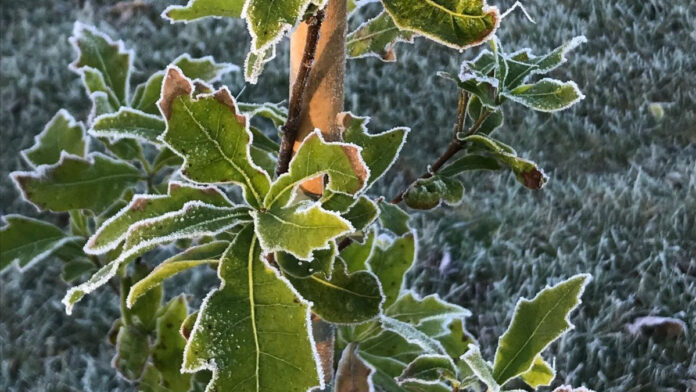As bud burst is becoming earlier each year, due to climate change, we need to be prepared for the greater likelihood of a damaging late frost. Beech whips and trees are especially vulnerable, with early varieties, such as Zlatia, are more likely to be injured. A notable recent frost in May 2020 caused significant damage to field-grown beech crops in Ireland. Traditional control in orchards has seen successful use of very fine mist irrigation, this can protect the fruit and flowers to as low as -8oC. Where cold air is trapped (thermal inversion) at ground level orchards and vineyards have also used fires to move the air. Two broad methods are used to protect plants; freezing avoidance and freezing tolerance.
Field nursery options
- Physical protection; damage can be prevented by fleecing seedbeds, however, this is impractical on, taller plants, larger scales and where wind will accompany the cold weather.
- Biostimulants have been promoted that with help increase a plants natural defences to cold. Products containing Seaweed extracts (like Ascophyllum nodosum), humic and fulvic acid, have been reported to increase resistance and are widely available. A recent scientific paper by Caltado notes “Si boosts plant vigour by improving root mass and density. It improves plant cell wall strength, structural integrity, and drought and frost resistance, and it strengthens plants’ natural pest- and disease-fighting systems”. Some manufacturers of amino acid products claim to protect to -3oC depending on duration and relative humidity.
- Chemical treatments that provide a barrier using polymer coatings e.g. Desikote.




